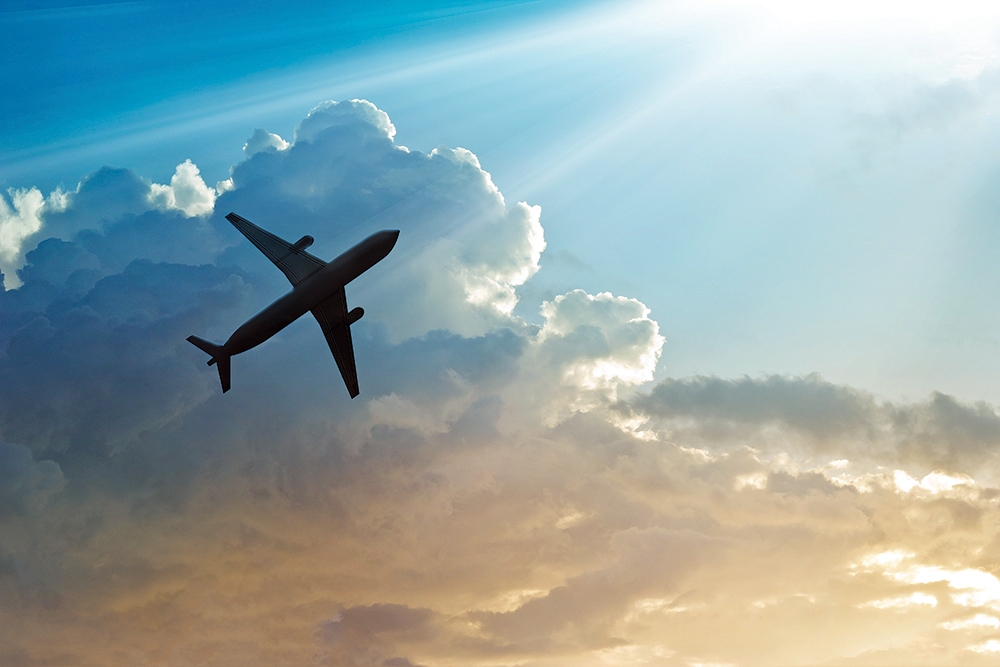
Despite the Bills to split Civil Aviation Authority of Nepal (CAAN) into two separate entities as regulator of civil aviation and airport operations plus air navigation service provider were endorsed by the National Assembly — Upper House of the Federal Parliament - both the Bills that were tabled on August 10, 2021 at the Lower House could not proceed for discussions as the house session ended abruptly. The previous government was reluctant to table the Bills again for discussions in the next session of the parliament.
Currently, CAAN has been functioning as the regulator of civil aviation as well as the service provider in the areas of air traffic management and airport/airfield operations. Though, there are separate directorates to look after the regulatory issues and services, it has become a major issue to lift the ban that was imposed by the European Union on Nepal’s civil aviation due to safety concerns.
In this regard, along with the Nepal Civil Aviation Authority Bill the government subsequently tabled Nepal Air Service Authority Bill 2020. These initiatives are considered as prerequisite set by the European Union for Nepali carriers to be allowed back in Europe. The European Union (EU) blacklisted the civil aviation sector of Nepal in December 2013 over concerns about the country’s safety oversight of its airlines following a series of air crashes in Nepal. The EU’s decision to blacklist Nepal’s civil aviation sector meant that Nepali airlines were not allowed to operate in EU airspace.
Reportedly, the move was taken after the International Civil Aviation Organisation (ICAO) found that Nepal’s civil aviation regulatory body, the Civil Aviation Authority of Nepal, did not meet international safety standards.
History of air crashes in Nepal
International Airlines
National plane (fixed wing)/helicopter
There may be some benefits in splitting CAAN. For example, dividing the authority into separate entities responsible for air traffic control, airport management and aviation safety oversight could lead to increased specialisation and expertise in each area. This, in turn, could lead to more effective and efficient management of aviation operations in the country.
However, there are also potential drawbacks to such a move. For one, it could create a more complicated bureaucracy that is more difficult to navigate and oversee. Additionally, separating CAAN could create more opportunities for conflict and confusion between the different entities, potentially leading to gaps in oversight and safety lapses.
Ultimately, the decision to split CAAN for aviation safety would depend on various factors including the current structure of the organisation, its capabilities, and the overall aviation safety situation in Nepal. Any decision to restructure CAAN should be made after careful analysis and consultation with stakeholders, including aviation industry experts, government officials and members of the public.
Overall, whether or not to split the Civil Aviation Authority in Nepal for aviation safety is a complex decision that would require a thorough analysis of the costs and benefits. While there are potential advantages to creating a dedicated agency, it is important to carefully consider the potential downsides and make sure that any changes are implemented in a way that maximises benefits and minimises risks. Alternately, if suggested political interests are being pointed to in whether to table this bill or not to, it is imperative that we question what those political interests are and whom it benefits.
READ ALSO:
| Date | Flight | Description |
| July 31, 1992 | TG-311 | Thai Airways plane carrying 99 passengers and 19 crew members onboard crashed on a hill 37 km north from Kathmandu airport. |
| September 28, 1992 | PIA-268 | Pakistan Airlines plane carrying 167 passengers and crew members onboard crashed at Bhattedanda, Lalitpur. |
| March 4, 2015 | TK-726 | Turkish Airlines aircraft crash landed at Tribhuvan International Airport. There were no casualties. |
| March 12, 2018 | UBG-211 | 49 passengers including pilot and co-pilot were killed on the spot at the crash site 440 metres from the runway of TIA. Two died in hospital. |
|
Date |
Crash description |
Fatalities/casualties |
| July 27, 2000 | Royal Nepal Airlines DHC-6 Twin Otter crashed on the way to Bajhang to Dhangadhi. | 25 killed |
| August 22, 2002 | Shangri-La Air, DHC-6 Twin Otter crashed in Pokhara. | 18 killed |
| May 25, 2004 | Yeti Airlines DHC-6-309 Twin Otter crashed on Lamjura hill near Lukla. | Three killed |
| September 30, 2004 | Sita Air Dornier 228 crash landed at Lukla Airport. | The airport was closed for several days. |
| June 30, 2005 | Gorkha Airlines Dornier-220 crashed on runway. | Crew members and passengers were injured. |
| June 21, 2006 | Yeti Airlines DHC-6 crashed at Jumla Airport. | Nine killed |
| September 23, 2006 | Shree Airlines Helicopter crashed at Ghunsa, Taplejung. | 24 killed including State Minister for Forests and Soil Conservation Gopal Rai and veteran conservationist/planner Harka Gurung. |
| October 8, 2008 | Yeti Airlines DHC-6 crashed near Lukla Airport. | 16 passengers, three crew members killed |
| April 19, 2010 | Nepal Airlines DHC-6 Twin Otter 300 | |
| August 24, 2010 | Agni air crashed at Makawanpur | 14 killed |
| December 15, 2010 | Tara Air DHC-6 crashed at Manedanda, Okhaldhunga | 19 passengers, three crew members killed |
| September 25, 2011 | Buddha air crashed at Bishankhunarayan-2, Chundanda Lalitpur | 19 killed |
| May 14, 2012 | Agni air Dornier 228 crashed near Jomsom | 13 passengers, two crew members killed (One crew member and four passengers survived) |
| September 28, 2012 | Sita Air 9N-HA Dornier crashed at Manohara, Bhaktapur. | 19 killed |
| May 16, 2013 | Nepal Airlines 9N-ABO crashed at Jomsom | Seven injured |
| February 16, 2014 | Nepal Airlines 9N-ABB Twin Otter crashed at Khidim, Arghakhachi. | 18 killed |
| May 12, 2015 | Helicopter ferrying relief materials for earthquake victims crashed in Sindhupalchowk. | 11 killed |
| February 24, 2016 | Tara Air Viking 9N-AHH Twin Otter crashed enroute to Rupsekot, Myagdi while flying to Pokhara to Jomsom. | 23 killed |
| February 26, 2016 | Air Kasthamandap 9N-AJB crash landed at Chilkhaya in Kalikot district. | Spot death of pilot and co-pilot, nine passengers were injured |
| August 8, 2016 | Fishtail Air helicopter crashed at Betini Nuwakot. | Seven killed |
| September 24, 2016 | Yeti Airlines aircraft overshoots 250 metres from runway at Gautam Buddha International Airport | No casualties |
| September 8, 2018 | Altitude Air helicopter crashed at Mailung Pakha of Myagang Rural Municipality, Nuwakot. | Six dead, one survived |
| July 12, 2019 | Yeti Airlines NYT-422 (9N-AMM) coming from Nepalgunj slipped off the runway just as it landed at Tribhuvan International Airport | No casualties |
| February 27, 2019 | Air Dynasty helicopter crashed in Taplejung district. | Seven onboard including Tourism and Civil Aviation Minister Rabindra Adhikari killed. |
| March 28, 2020 | Yeti Airlines Y12e aircraft landed approximately 60 metres short of the runway, skidding to a nearby grassland at Nepalgunj Airport | No casualties |
| May 29, 2022 | Tara Air DHC-6 aircraft with 22 people on board crashed near Jomsom. | 19 passengers and three crew members killed |
| January 15, 2023 | ATR 72 aircraft of Yeti Airlines that flew to Pokhara from Kathmandu crashed in Pokhara. | 71 killed, one missing (suspected dead) |
International standards
Erstwhile Minister for Culture, Tourism and Civil Aviation, Yogesh Bhattarai, had registered the two aforementioned Bills at the National Assembly in 2021 to streamline civil aviation and enforce safety regulations as per global standards. The Bills envisioned splitting CAAN into regulator and service provider, which is also one of the requirements set by the European Union for Nepali carriers to be allowed back in Europe. There have been more than two dozen flights involved in crashes with fatalities since 2000. A series of air crashes from 2010 to 2012 forced the European Union Aviation Safety Agency to ban Nepali aircraft in European airspace taking reference of the ICAO’s report. Moreover, the International Civil Aviation Organisation, the United Nations Aviation Body, has blacklisted Nepal’s air travel since 2013, calling it unsafe. The ICAO had taken three plane crashes in the same year in 2010, one in 2011 and two in 2012 as the base for the ban on Nepali airlines. However, ICAO lifted the ban after four years in 2017 taking into consideration improving safety standards and Nepal’s commitment to further enhance safety as per recommendations. ICAO has awarded Nepal an effective implementation score of 70.1% in its latest safety audit conducted in April 2022, ranking the country above the global average of 67.2%. However, the EU conducted a separate audit in October 2022 and the authorities of CAAN were excited about the ICAO’s recent award and were expecting to pass the EU’s safety audit. The joint statement issued by CAAN and European Union on November 28, 2022 says, “Although Nepal for the time being remains on the Air Safety List, the EU Air Safety Committee was briefed about the progress made by Nepal in terms of air safety. In particular, the adaptation of a new Civil Aviation Authority of Nepal regulation on the functional separation of CAAN’s regulatory and service provider roles has been assessed. Now, the implementation of this new regulation as well as progress in aligning CAAN’s safety oversight capacity with the relevant international safety standards must be verified through an EU on-site assessment visit to Nepal.” CAAN Director General, Er. Pradeep Adhikari, has claimed that the ICAO’s audit has given room for the EU to rethink about their continued ban on Nepali aircrafts. However, the question of aviation safety in Nepal has come to the fore more visibly following the recent Yeti Airlines ATR-72 crash at Seti Gorge near the newly built Pokhara International Airport. The recent incident has hammered the efforts made by the aviation sector regulator to perform better in terms of safe air transport as well as adversely affected the recovery of the country’s tourism sector.EU and CAAN lock horns
There have been serious reservations on CAAN authorities towards splitting the entity into two separate bodies — regulatory body and service provider. Initially, trade unions in CAAN were opposing the idea, however it has become a common voice in CAAN from the Director General to the clerk that the CAAN should not be separated into two different entities. Authorities claim that the EU’s intention is political rather than technical and the solution must be sought politically. The Bills endorsed by the National Assembly remain idle instead of being tabled in the Lower House of the Federal Parliament — House of Representatives. To be effective as law, they must be endorsed by the House of Representatives and receive the President’s seal. However, EU has underlined the spilt of CAAN as a prerequisite to allow Nepali aircraft in its airspace. In a recent interview, EU Ambassador to Nepal, Nona Deprez, said that EU has its own safety standards to protect EU citizens and highlighted deficiencies in the civil aviation system — traffic control, inspection, accidents, investigation, training of pilots, command and control everything. “While talking about an aircraft too, what is happening in Nepal is one person is screwing a bolt and the same person is checking whether the bolt has been properly screwed; that is a potential safety concern,” she said, “The Government of Nepal decided to split CAAN into service provider and a regulator five years ago and drafted the Bills as well. This is something that is not going to be unique to Nepal, it is already in practice in many countries.” The EU has underscored a few issues that the aviation sector regulator has been working on. Improving safety oversight: CAAN has strengthened its safety oversight system by increasing its capacity to carry out safety audits and inspection of airlines, airports, and other aviation-related entities. Upgrading infrastructure: Nepal is working to upgrade its airports and air traffic control systems to improve safety and efficiency. Investing in training: The government is investing in training programmes for aviation professionals to improve their skills and knowledge. Strengthening regulations: CAAN has introduced new regulations and guidelines to enhance safety in the aviation sector. Collaboration with international organisations: The Government of Nepal and CAAN are working closely with international organisations like the ICAO to enhance safety standards in the aviation sector. Reportedly, these measures have helped improve the safety standards of civil aviation in Nepal, however there is still room for improvement. Continued investment in infrastructure, training and safety oversight are necessary to ensure that Nepal’s civil aviation sector meets international safety standards and is able to operate safely and efficiently. CAAN Director General Adhikari has said that the EU has taken ICAO’s report as reference while imposing ban on Nepal’s civil aviation but the ICAO’s recent audit shows we are above the global average in terms of safety compliance, which they are overlooking and showing reluctance to recognise.Advantages and disadvantages of splitting CAAN
|
Advantages |
Disadvantages |
| Enhanced focus on aviation safety: By creating a dedicated aviation safety agency, the Government of Nepal can demonstrate its commitment to improving the safety of the country's aviation sector. This can help attract more investment and encourage growth in the sector. Improved regulation and oversight: A dedicated agency could potentially improve the quality of regulation and oversight of the aviation industry, which could lead to safer operations and better outcomes for both passengers and operators. Better coordination and communication: By having a separate agency focused solely on aviation safety, there may be better coordination and communication among various stakeholders in the industry, including airlines, airports, and regulators. This could help identify and address potential safety issues more quickly and effectively. | Increased bureaucracy: Splitting the Civil Aviation Authority of Nepal could potentially create more bureaucracy and red tape, which could slow down decision-making and make it harder for operators to do business. Reduced efficiency: The creation of a separate agency could lead to duplication of efforts and resources as the Ministry of Culture, Tourism and Civil Aviation has also been performing regulation works. Lack of capacity development opportunities for bureaucracy which could result in reduced efficiency and higher costs. Limited expertise: Splitting CAAN could potentially result in a loss of expertise and institutional knowledge. It may be challenging to find enough qualified personnel to staff two separate agencies, particularly in a country like Nepal with limited resources. Adjustment of staffs: Adjustment of staff could be a big challenge while splitting CAAN. |
Published Date: February 28, 2023, 12:00 am
Post Comment
E-Magazine
RELATED Feature



-1761806697.jpg)
-1758006240.jpg)
-1752225714.jpg)